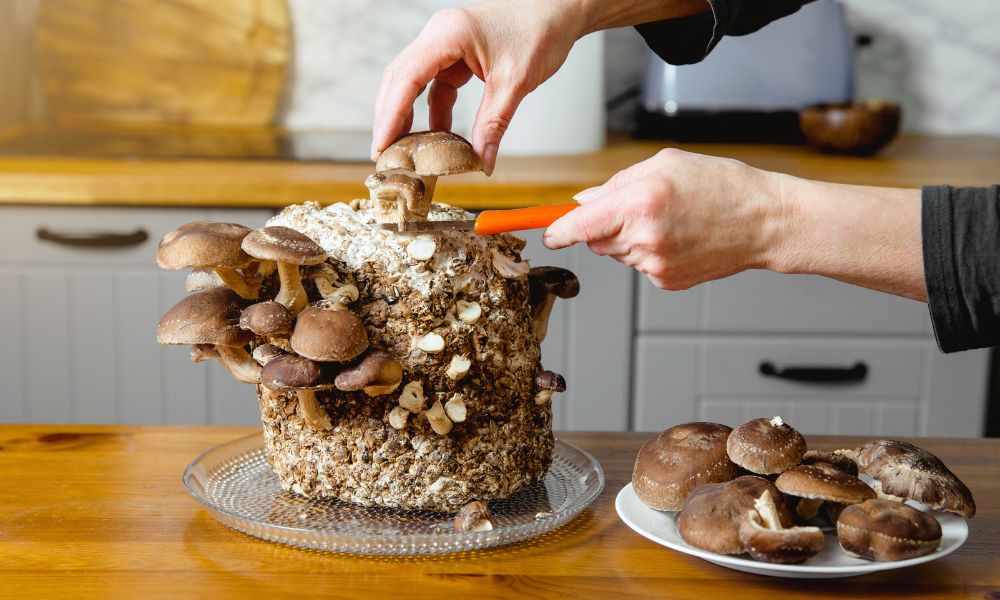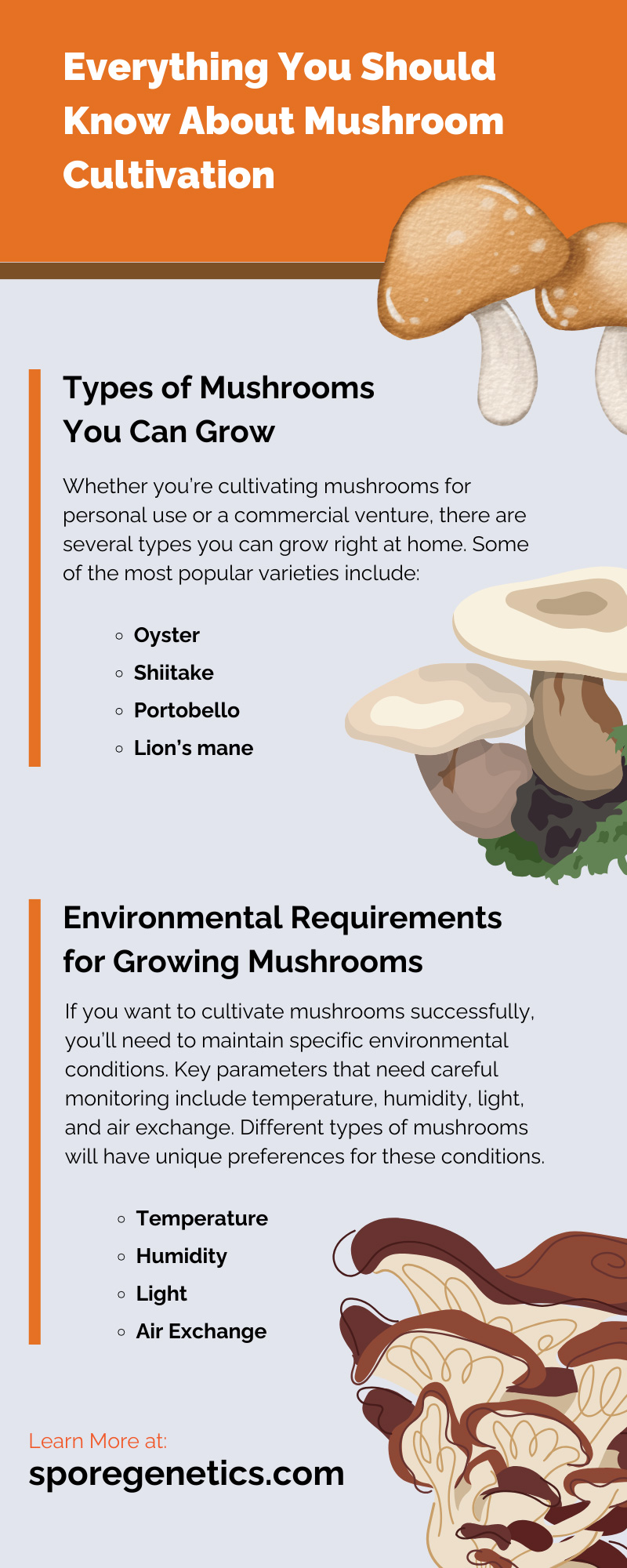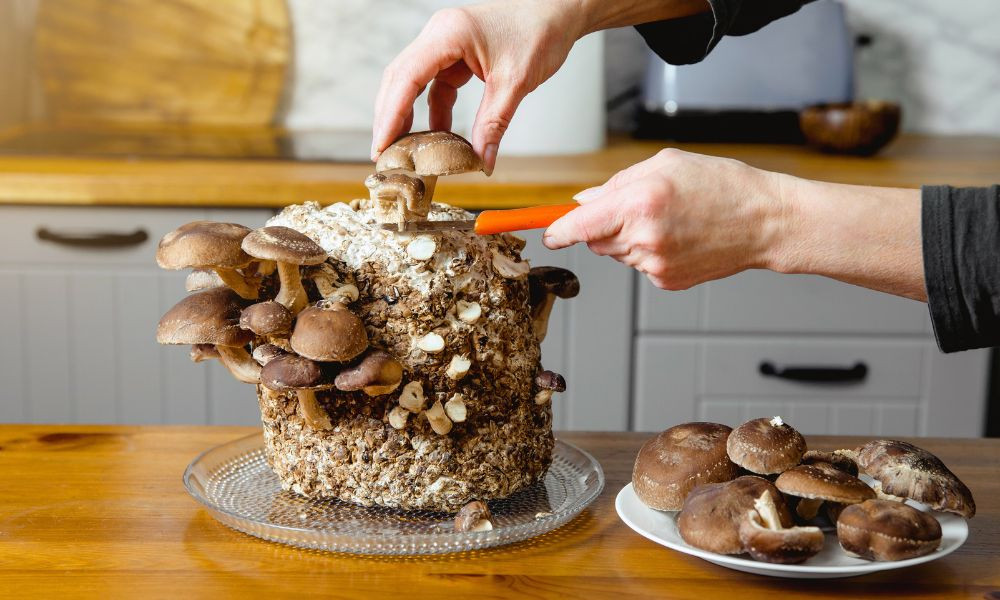Everything You Should Know About Mushroom Cultivation
Posted by admin on Nov 21st 2023

Mushroom cultivation is a fascinating, rewarding endeavor that beckons to people who crave connection with nature and have a passion for sustainable living. If you’ve marveled at the diverse array of mushrooms in your local grocery store or farmers market, imagine the satisfaction of growing those fungi at home.
This comprehensive guide will provide everything you need to know about mushroom cultivation, from the basic requirements to the intricate steps involved in the process. As we delve into this intriguing venture, you’ll discover not only the practicalities of growing mushrooms at home but also the profound health benefits they offer. Let’s embark on this journey together and foster a deeper understanding of mushroom growth. Unlock the potential of these remarkable organisms!
The Basics of Cultivation
The process of mushroom cultivation involves the growth and development of edible fungi. This practice has gained popularity through the years, with many enthusiasts exploring it as a hobby and others engaging in it as a commercial venture.
At its core, mushroom cultivation involves creating the appropriate conditions for the growth of various types of mushrooms. The process starts with the preparation of a substrate: a nutrient-rich substance on which the spores will grow. Depending on the type of mushroom you’re growing, the substrate could be a mixture of organic materials such as straw, wood chips, or compost.
Once you’ve prepared the substrate, you’ll then inoculate it with mushroom spawn, a material infused with mycelium—the vegetative part of the fungus. You’ll keep the inoculated substrate in a controlled environment to encourage growth. Over time, the mycelium will spread and colonize the substrate, eventually producing the fruiting bodies we recognize as mushrooms.
Types of Mushrooms You Can Grow
Whether you’re cultivating mushrooms for personal use or a commercial venture, there are several types you can grow right at home. Some of the most popular varieties include:
- Oyster
- Shiitake
- Portobello
- Lion’s mane
Each type has its own specific growth requirements, including the ideal temperature and humidity levels. Different mushrooms will also flourish more rapidly on different substrate materials. With the right knowledge and tools, anyone can embark on this rewarding journey.
Environmental Requirements for Growing Mushrooms
If you want to cultivate mushrooms successfully, you’ll need to maintain specific environmental conditions. Key parameters that need careful monitoring include temperature, humidity, light, and air exchange. Different types of mushrooms will have unique preferences for these conditions.
Temperature
Depending on the type of mushrooms you’re growing, you’ll need to keep the cultivation environment at the species’ preferred temperature. For example, white button mushrooms prefer temperatures between 18 and 24 degrees Celsius. Meanwhile, shiitake mushrooms favor slightly cooler climates, with temperatures between 12 and 18 degrees Celsius.
Humidity
Most mushrooms need a high level of moisture in the air, typically between 80 and 95 percent. However, maintaining this level of humidity without the proper equipment can be a unique challenge, especially in drier climates. Growing setups such as shotgun fruiting chambers can help you keep a controlled, humid environment in your own home.
Light
Mushrooms, of course, are fungi, so they don’t photosynthesize like plants do. They also generally don’t need light for energy, but a small amount of indirect light can encourage the fruiting bodies to grow upward.
Air Exchange
Mushrooms do thrive in dark, damp environments without much air circulation, but they still need some fresh oxygen in order to grow. You’ll also need to remove the carbon dioxide they produce during cultivation, so your growing setup should have adequate ventilation.
Equipment Needed for Cultivation
The equipment you use to grow mushrooms depends on the scale of your operation. If you’re just growing mushrooms for personal use at home, the requirements are relatively simple. A clear plastic tote with holes drilled in the sides can serve as a fruiting chamber, providing a controlled environment for your mushrooms to grow in. You’ll also need a spray bottle for regular misting to maintain humidity levels.
To prepare your substrate, you’ll need a pressure cooker or autoclave to sterilize the substrate and kill any competing organisms. Cultivation also requires a clean workspace and, ideally a laminar flow hood to inoculate your substrate with mushroom spawn. This is to prevent contamination from other fungi or bacteria floating around.
Large-Scale Cultivation
If you’re planning to grow mushrooms on a commercial scale, you’d do well to invest in more advanced equipment. Industrial-sized pressure cookers, automated misting systems, and climate-controlled grow rooms will help you grow massive quantities of high-quality mushrooms.
Steps To Start Mushroom Cultivation
Once you’ve carefully planned your cultivation venture and prepared your growing setup, you’ll perform a series of steps to successfully inoculate and cultivate your mushrooms.
Prepare the Substrate
The substrate is the material upon which your mushrooms will grow. Depending on the type of mushroom, this could be straw, wood chips, compost, or a specially prepared mixture in a sterile bag. Make sure your substrate is properly sterilized to eliminate any competing organisms.
Inoculation Time
To inoculate the substrate with the building blocks of mushroom growth, you can use mushroom spores or one of the liquid culture syringes for sale at Spore Genetics. In a clean environment, introduce the spores or liquid culture to the substrate and wait for the mycelium to grow and colonize.
Incubate the Substrate
Place the inoculated substrate in a dark, warm place to allow the mycelium to fully colonize the substrate. As the mycelium grows, it resembles a fluffy white layer of interconnected threads. The incubation process can take several weeks to a few months, depending on the type of mushrooms you’re growing.
Initiate Fruiting
Once the substrate is fully colonized, you’ll need to change the environmental conditions to mimic those that the fungus experiences in nature when it’s time to produce actual mushrooms. Common changes include reducing temperature, increasing ventilation, and introducing an indirect light source.
Harvest the Mushrooms
Once the mushrooms reach the appropriate size, it’s time to harvest! You can gently twist and pull the mushroom from the substrate or use a knife to carefully cut the fruiting body away.
Prepare for the Next Crop
One great perk of mushroom cultivation is that you can continue the cycle practically indefinitely. Simply prepare the substrate for the next grow cycle just as you did for the first one. Some types of mushrooms will produce several crops from the same substrate.
Now that you’ve journeyed through an introduction to the world of mushroom cultivation, you can see why this practice has captivated enthusiasts and commercial growers alike. However, mushroom cultivation extends beyond the confines of a hobby or commercial venture; it serves as a testament to the intricate balance of nature.
If you should know anything about mushroom cultivation, it’s that it demands patience, precision, and an understanding of the delicate interplay between various environmental factors. The cultivation process becomes a mirror that reflects your own ability to create, adapt, and thrive—much like the mushrooms you grow.


